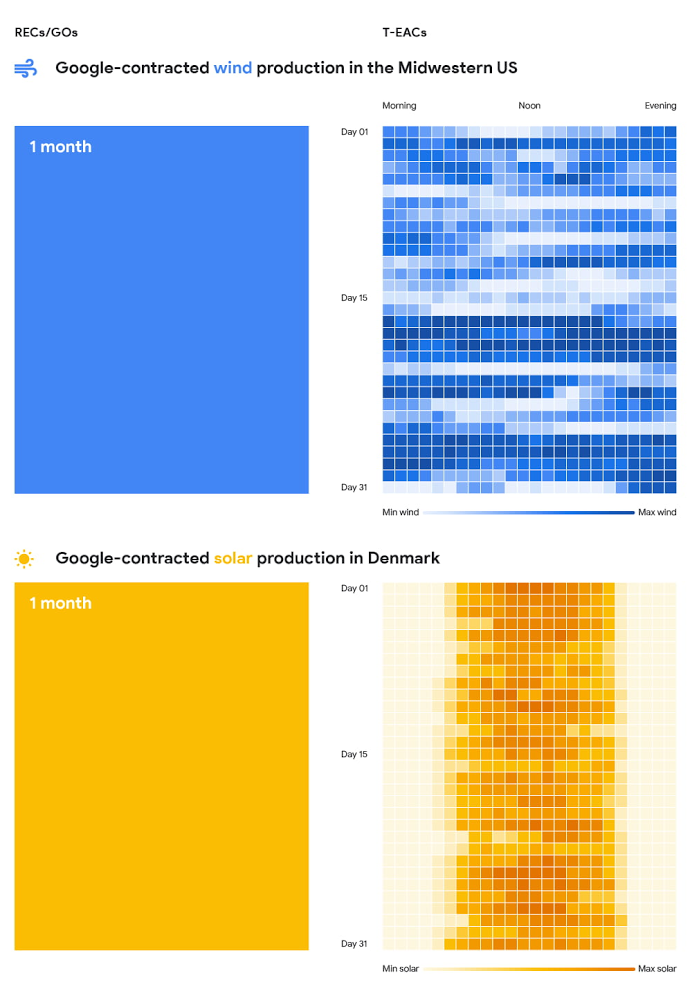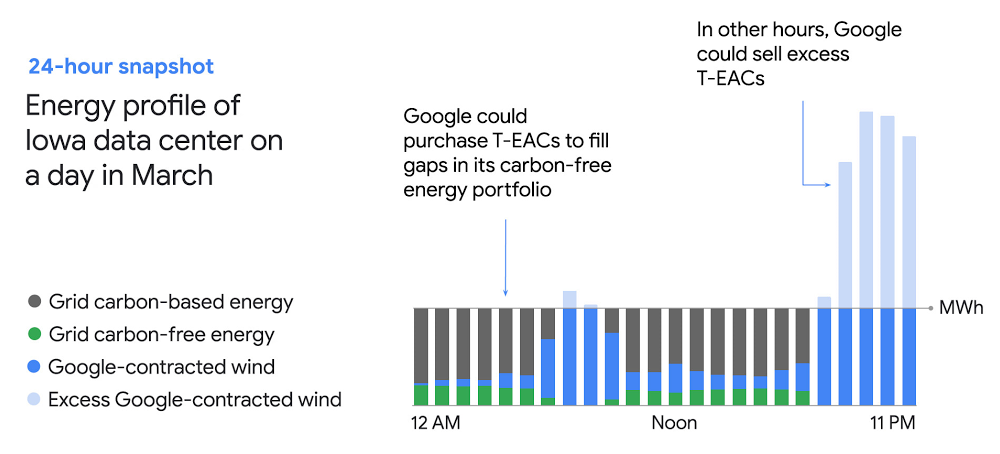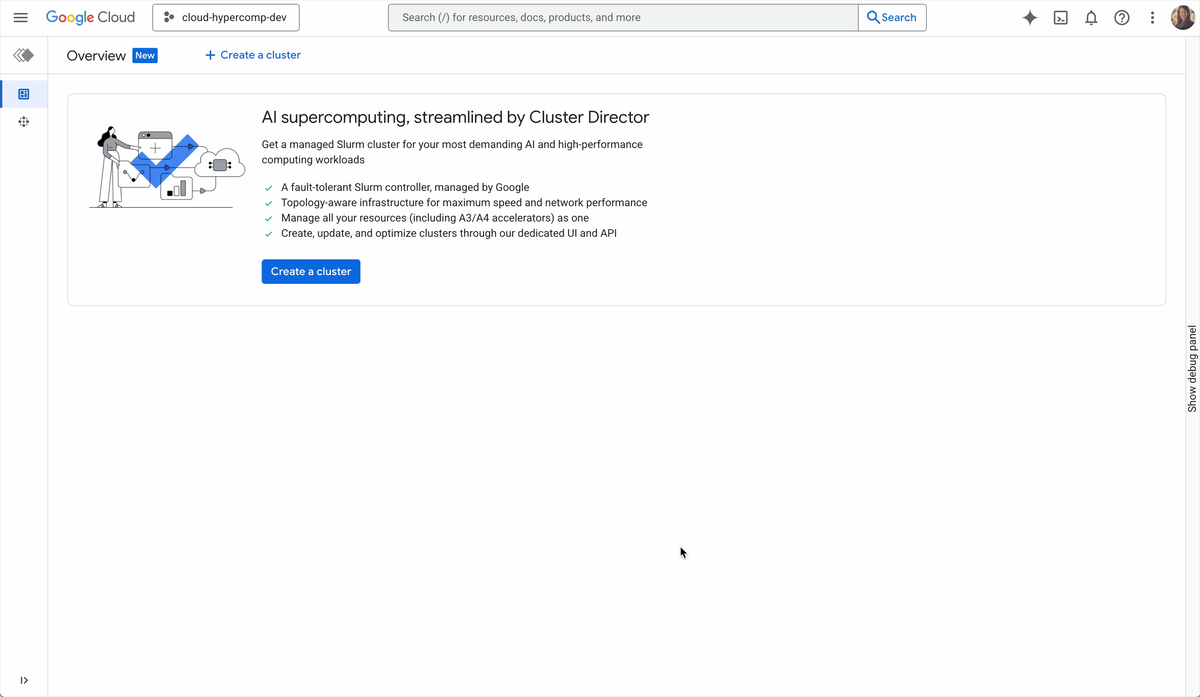GCP – A timely new approach to certifying clean energy
Google Cloud operates the cleanest cloud in the industry. It’s a leadership role we’re incredibly proud of and one that requires continued investment and evolution in the way we consume and track our energy usage around the world. When we announced that Google aims to operate on 24/7 carbon-free energy by 2030, we committed to reaching our goal in ways that empower others to do the same. One area we’re especially excited about is advancing tools that help companies and organizations better track and certify their use of clean electricity.
Addressing climate change calls for quickly decarbonizing the world’s electricity supply. In practice, this will require finding ways to match carbon-free resources and electricity demand in every hour, on every regional grid. Yet the systems that Google and other large energy buyers use today to certify clean power procurement only function at the monthly or annual scale. By building more detailed energy tracking systems, we can incentivize approaches to supplying carbon-free energy exactly when, and where, it’s most needed.
That’s why, in both the Midwestern U.S. and Denmark, Google is now piloting a concept known as Time-based Energy Attribute Certificates (T-EACs) – a new, hourly approach for verifying clean energy matching at our data centers. At the same time, we’re collaborating with others in the industry to modernize the standards and policies that underpin clean energy certification systems worldwide.
How clean energy purchases are certified today
To understand how clean energy certification currently works, consider a wind farm in Iowa. Every time the facility produces a megawatt-hour of electricity, it also produces something known as a Renewable Energy Certificate (REC). This third-party verified REC (called a Guarantee of Origin, or GO, in Europe) doesn’t represent the actual electricity produced, but rather its environmental attributes.
Companies can buy this REC, either “bundled” with the underlying electricity (a high-impact approach Google typically uses) or “unbundled” (meaning the REC and the electricity are sold separately). A utility trying to meet a government’s clean energy mandate could use the REC to help fulfill its obligation. Or, if a company has set a voluntary target, it could use the REC to certify that it’s progressing toward its goal. RECs and GOs are how Google has confirmed that we’ve reached our goal of matching 100% of our global, annual electricity consumption with renewable sources in each year since 2017.
But RECs are an outdated approach for addressing an increasingly nuanced problem. The certificates tell us how much total electricity a wind farm produces in a given month, but not the exact hour when it was produced. As a consequence, a company buying a REC may be taking credit for wind power that is less useful from a carbon impact perspective – e.g. in hours when there is already mainly carbon-free energy on the grid. Ideally, certificate tracking systems would incentivize resources that help fill gaps in the supply of round-the-clock clean power.

RECs / GOs vs. T-EACs associated with Google renewable energy purchasing. RECs / GOs indicate how much energy wind or solar farms produce in a month, but not precisely when it is generated. In contrast, each of the 744 hours in a 31-day month has its own T-EAC, with a corresponding amount of electricity produced. (Note: volumes of boxes are not to scale. Google currently buys more total wind power in the Midwestern U.S. than solar in Denmark.)
What’s more, existing certificate instruments are poorly suited to tracking output from novel clean energy technologies. For instance, without granular measurement approaches, we can’t ensure that new batteries on grids are charged with carbon-free energy, or discharged at times when they displace fossil fuels.
A timely new approach
T-EACs are instruments that, in addition to tracking how and where electricity is produced, also certify specifically when that electricity was produced. Returning to our wind farm example, a company could buy a T-EAC for any single hour of production.
In the Midwestern U.S., Google is now piloting this concept in partnership with M-RETs, a non-profit which tracks and validates energy attribute certificates. When we purchase electricity from wind facilities, we now buy and retire certificates that include associated hourly data – an initial step toward a formalized time-based tracking system in the region (read more from M-RETs here). Similarly, we’ve begun working with the Danish grid operator, Energinet, to test out their Project Origin platform, which simulates transactions of hourly GO certificates for the carbon-free energy projects supporting our data center in Denmark.
For T-EACs to be adopted worldwide, we’ll need to standardize the certificates and integrate them into existing tracking systems and carbon accounting programs. Also, grid operators will need to enable customers to access and understand their hourly energy data. That’s why we support policies that mandate publication of grid data, and why we serve on the Advisory Board for EnergyTag, an independent non-profit pioneering a global tracking standard for T-EACs.
Together with EnergyTag and others, we’re also exploring opportunities to design T-EACs so they encode other information that goes beyond timing — such as the end use of the energy, or associated carbon emissions. Ultimately, we envision achieving a state known in Europe as “full disclosure,” in which T-EACs track electricity from all generation sources, carbon-free or otherwise.
The road ahead
Google’s mission is to organize the world’s information and make it universally accessible and useful. It’s clear that one area where more accessible, better organized information would be useful is in the energy sector.
T-EACs will bring transparency to the world’s electric grids and in the process, enable a wave of software solutions that help organizations understand and optimize their energy use. For Google’s operations, we expect to use time-based certificates in a rapidly expanding number of regions, and we look forward to providing updates on our progress soon.
More broadly, as T-EACs mature, the time-stamped, tradable instruments will form the basis for price signals that reward those who can find ways to produce carbon-free energy when it’s most scarce on grids. Going forward, we’ll be hard at work helping accelerate the adoption of such instruments to drive faster towards fully decarbonized grids.
Given the urgency of addressing climate change, T-EACs are a timely idea indeed.
Read More for the details.




